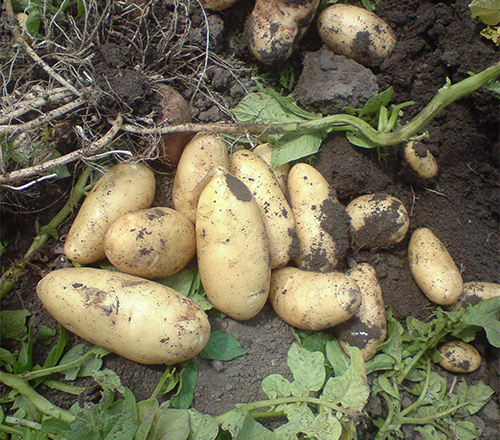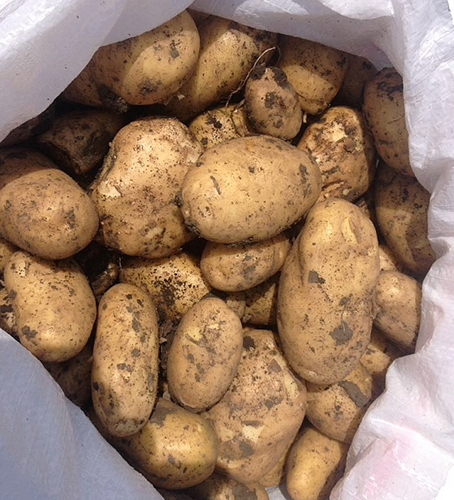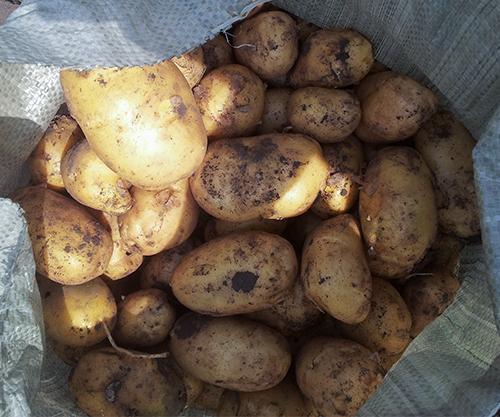Impala potato variety
Impala is an early ripening potato variety (Solanum tuberosum). Received by employees of the Dutch company Agrico (Emmeloord). Included in the state register of plants of the Russian Federation in 1995, in the state registers of Ukraine and the Republic of Belarus - in 2000. Approved for use in four regions of the Russian Federation: Central (Bryansk, Vladimir, Ivanovsk, Kaluga, Moscow, Ryazan, Smolensk and Tula regions), Volgo-Vyatsk (Kirov, Nizhny Novgorod and Sverdlovsk regions; Republic of Mari El; Perm Territory; Udmurt and Chuvash Republics ), North-West (Vologda, Kaliningrad, Kostroma, Leningrad, Novgorod, Pskov, Tver and Yaroslavl regions) and Nizhnevolzhsky (Astrakhan, Saratov and Volgograd regions; Republic of Kalmykia). In some regions of Russia and Ukraine, this variety is called "Kubanka" or "Krymchanka".

From the moment of emergence to harvest, it takes only 40 - 60 days. When dug up early, the tubers are watery and have a mediocre taste, but over the next three to four weeks, the palatability improves and the potatoes begin to boil. In the southern regions, the Impala is capable of producing two crops per year.
Plants are tall (70 - 80 cm), erect, well leafy, form 4 - 5 stems, grow quickly at the beginning of the growing season. Flowers are white. Planting rate: 40,000 tubers per 1 ha (tubers size 35/55 mm). It is recommended to cut the tops two weeks before harvest.

The tubers are large, oval and elongated-oval, aligned, with light yellow flesh. The peel is smooth, yellow in color. The eyes are small, shallow. The average number of tubers per bush is 10 - 12 pieces. Marketable tuber weight - 88 - 150 grams. The yield of marketable tubers is 180 - 360 c / ha, which is 75 - 233 c / ha higher than the results of the standard varieties Bryansky Early and Izora. The maximum yield is 367 c / ha, which is higher than the results of the Bryansk early standard by 166 c / ha (data for the Bryansk region). Marketability is high - 89 - 94%. Keeping quality is 90%, which is 2% higher than the keeping quality of the Isora standard. The dormant period of tubers is long. The tubers gain mass until August.
A variety for table use, with good taste, on a five-point scale, estimated at 4 points. Perfect for baking, frying, making soups and salads, not bad for boiling. The pulp does not darken after cooking. Starch content - 10.5 - 14.6%, dry matter - 17.7%.

Impala is characterized by resistance to golden potato nematode and potato cancer, and is also slightly affected by common scab and viral diseases. However, it has poor resistance to rhizoctonia, powdery scab and late blight of tops. It is also worth noting the high stress resistance, drought resistance (excellent for the southern regions) and mechanical damage, as well as the ability to form a crop before late blight appears.
This potato is recommended to be grown on light to medium, not waterlogged soils, and also to apply a moderate amount of nitrogen under it. Seed material before planting can not be germinated or warmed up. However, sprouting increases yields. In rainy summers, tubers are susceptible to disease.
Advantages of the Impala variety: stable and high yield, early ripening, good taste, high marketability and productivity, resistance to nematodes, fast weight gain of tubers (50 days), resistance to diseases and adverse conditions, smooth and even tubers.









To be honest, I didn't know the name of this potato. I recognized it from the photo. I've been planting it for four years now and I'm very happy. Satisfies everything in it - from taste to yield. True, this year he gave a smaller harvest than in previous years. In past years, there was no petty one, but in this one it was. I plant early, somewhere in early April, or even a little earlier, as soon as the weather permits. I definitely germinate. Of course, I am a little afraid that early shoots will pick up frosts, therefore, as soon as I find out an unfavorable forecast, I try to huddle well. We start eating in early July. It is not very big yet, but it is quite suitable for eating. Dig it out completely in mid-August. It is very pleasant to choose - smooth, even, one to one.